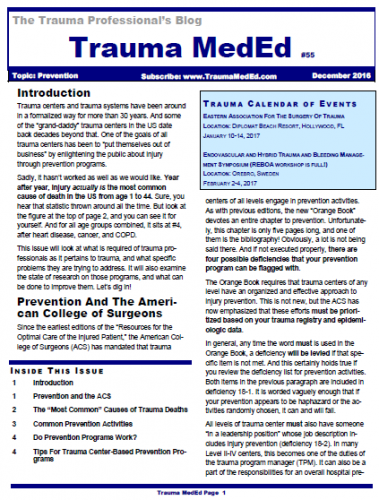Today is the final installment in a series about the use of anti-Factor Xa levels to titrate enoxaparin dosing to prevent venous thromboembolism (VTE). This is another study that tries to show that “hitting the number” actually makes a difference in patient care. You decide.
This study identified a subset of patients at high-risk for VTE based on a commonly used and very good risk screening tool, the Risk Assessment Profile (RAP). It takes some 17 factors into account to arrive at a numerical score. In this paper, the authors chose a score of 10 or greater to denote high risk. The patients were all seriously injured, and were in the trauma ICU of this established Level I trauma center.
This retrospective study excluded non-ICU patients, ones who did not receive enoxaparin or anti-Xa levels, and two patients with DVT on admission. This brought the number of eligible patients from 621 to 127 (the treatment group). They then narrowed the field down to the high-risk treatment group by excluding patients with a RAP score < 10. Now we are down to 86. But then 30 more (35%) were excluded because they did not undergo duplex ultrasound screening, leaving only 56 to study (!).
The control group was a “similar” historical cohort from a two year period from 2009 to 2012. You can tell that this group is getting a little stale, because the only patients included were those who received unfractionated heparin for prophylaxis (remember those days?). Of the 106 patients in the control group, 20 (28%) were reported as have VTE. However, it included 6 patients with DVT on admission, which were excluded in the study group. This makes the DVT rate look higher in the control group. It also included 2 upper extremity DVT and 1 septic pelvic venous thrombosis. Excluding all of these brings the historical VTE rate down to only 10%. Remember this.
So let’s get on to the factoids:
- Only 35% of the 127 patient treatment group “hit the number” for anti-Xa (0.2-0.4 IU/ml) after three 30mg doses of enoxaparin
- An additional 25% managed to achieve the desired anti-Xa level after dose adjustment, but 51 patients (40%) never did get there
- There were 10 VTE events in the 127 treatment group patients, 9 of whom had high RAP scores, giving them a 7.8% rate of VTE
- Nine of the 10 VTE patients occurred in patients with low anti-Xa levels
- The authors compared their 7.1% DVT rate with the 21% in their historical controls, concluding that titrating anti-Xa levels reduced this rate. They did not include PE for some reason, and do not claim a statistical difference. They admit that the study was underpowered to detect differences in VTE. There is no significant difference in VTE rates in the study or control groups.
Bottom line: This is the last paper on the topic. I promise. At least for a while. Here’s what we know:
- VTE is a problem in trauma patients, particularly seriously injured ones
- We are not very good at sticking to a prophylaxis or screening regimen (note how many patients are excluded in all of these studies)
- We can’t seem to generate the numbers to conduct a good study that can detect differences in what we do
- It’s difficult to “hit the number” for anti-Xa using standard enoxaparin dosing
- We don’t even know if it makes a difference if we do “hit the number”. VTE rates seem to be the same regardless.
So we are struggling to make a lab test look right to adjust enoxaparin dosing, and we don’t even know if it makes a difference. Will somebody put a good, multi-center study together and help us to figure all of this out?
Related posts:
- Enoxaparin And anti-Xa Levels: Who Cares? Part 1
- Enoxaparin And anti-Xa Levels: Who Cares? Part 1.5
- Enoxaparin And anti-Xa Levels: Who Cares? Part 2
- Enoxaparin And anti-Xa Levels: Who Cares? Part 3
Reference: Anti-Xa-guided enoxaparin thromboprophylaxis reduces rate of deep venous thromboembolism in high-risk trauma patients. J Trauma 81(6):1101-1108, 2016.

